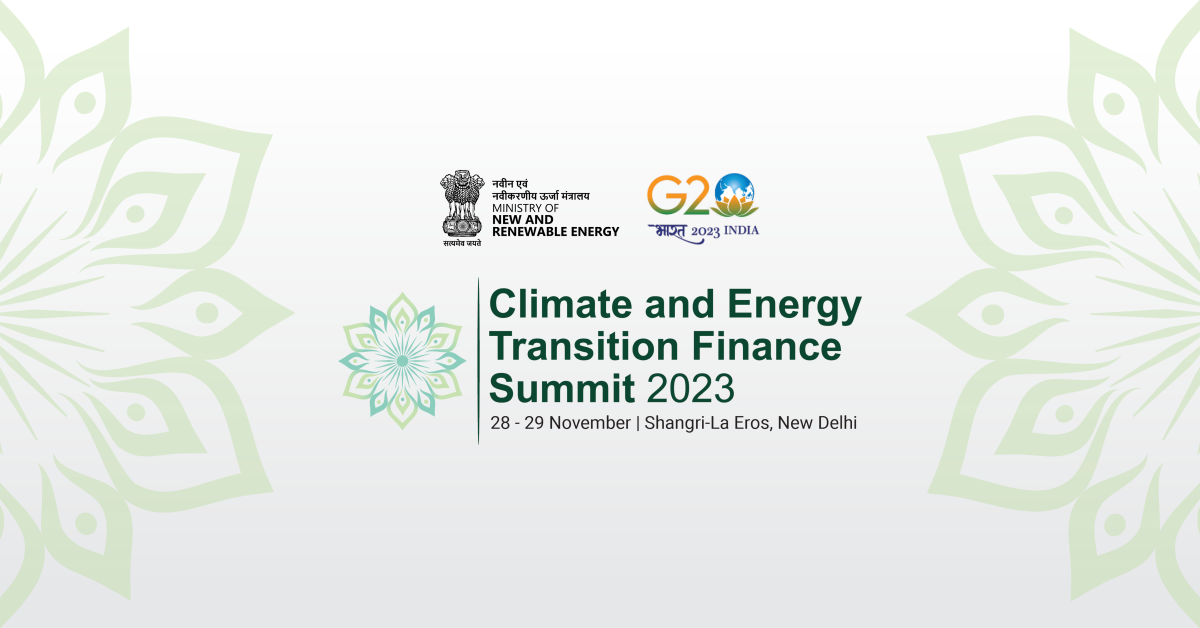1. Discuss the role of international climate finance in India’s energy transition. How can India leverage global funding mechanisms to achieve its sustainable development and climate targets?
| Syllabus: General Studies – III: Environment, Climate Change, and International Cooperation |
IN NEWS: India’s clean energy rise needs climate finance expansion
India has set ambitious renewable energy targets, including 500 GW non-fossil fuel capacity by 2030, to reduce carbon intensity and meet climate commitments under the Paris Agreement. However, financing this clean energy transition remains a major challenge.
Role of International Climate Finance:
1. Provides concessional loans, grants, and technical assistance for renewable energy, energy efficiency, and adaptation projects.
2. Supports access to funds from Green Climate Fund (GCF), Global Environment Facility (GEF), and multilateral institutions like the World Bank, Asian Infrastructure Investment Bank (AIIB), and New Development Bank (NDB).
3. Reduces investment risk, encouraging private sector participation. For example, World Bank-backed rooftop solar programs have mobilized private investment in urban solar projects.
4. Facilitates technology transfer and capacity building, e.g., solar PV manufacturing collaborations with Germany and Japan.
Leveraging Global Mechanisms:
- Strengthen institutional frameworks (e.g., IREDA, Ministry of New and Renewable Energy) to channel funds efficiently.
- Use blended finance, green bonds, and public-private partnerships to mobilize private capital.
- Negotiate innovative financing terms in bilateral/multilateral agreements to access larger funding.
- Align projects with SDGs and Paris Agreement goals to attract global investors and concessional support.
International climate finance is pivotal for India’s energy transition. Strategic leveraging of global mechanisms can ensure sustainable development, energy security, and climate resilience, while fulfilling India’s global climate commitments.
| PYQ REFERENCE Q1. “India has a pivotal role in global climate action. Examine the mechanisms available for financing India’s renewable energy projects.” [UPSC 2018] Q2. “What is meant by climate finance? Discuss the challenges faced by developing countries in accessing it.” [UPSC 2020] |
2. Examine the role of technology in enhancing India’s disaster preparedness and response. How can technological integration improve risk-informed planning and decision-making?
| Syllabus: General Studies – III: Disaster Management, Environmental Conservation |
IN NEWS: India’s direction for disaster resilience – It uses scientific advancements to prioritise nature-based solutions through public finance
India, one of the most disaster-prone countries in the world, faces frequent floods, cyclones, earthquakes, and heatwaves. Technology plays a vital role in improving disaster preparedness, early warning, and response systems, enabling a shift from reactive relief to proactive risk reduction.
Role of Technology in Disaster Preparedness and Response:
1. Early Warning Systems (EWS):
- The Indian Tsunami Early Warning Centre and IMD’s cyclone alert system provide real-time warnings.
- Use of satellite-based weather monitoring enhances forecasting accuracy.
2. Geospatial and Remote Sensing Tools:
- ISRO’s Bhuvan portal and NRSC use GIS mapping for hazard zonation and damage assessment.
- Helps identify vulnerable regions for flood or landslide management.
3. Communication Technology:
- Common Alerting Protocol (CAP) and mobile-based disaster alerts ensure last-mile connectivity.
- Use of AI and drones for real-time damage assessment and rescue logistics.
4. Data and AI Integration:
- Big data analytics and machine learning assist in risk modelling and predictive analysis.
- Platforms like NDMA’s Decision Support System aid in coordinated response planning.
Improving Risk-Informed Planning:
- Integrating real-time data into urban planning, land-use zoning, and climate adaptation.
- Developing Digital Twin cities for simulation-based disaster response.
- Promoting inter-agency data sharing through a unified national disaster database.
Technological integration enhances India’s capacity for anticipatory governance, transforming disaster management from crisis response to risk-informed resilience. Sustained investment in innovation and local capacity will be key to minimizing future losses.
| PYQ REFERENCE Q1. “Discuss the role of technology in early warning and disaster mitigation in India.” [UPSC 2018] Q2. “Critically examine the impact of early warning systems in managing disasters in India.” [UPSC 2021] |
Source:https://www.thehindu.com/opinion/op-ed/indias-direction-for-disaster-resilience/article70128332.ece

